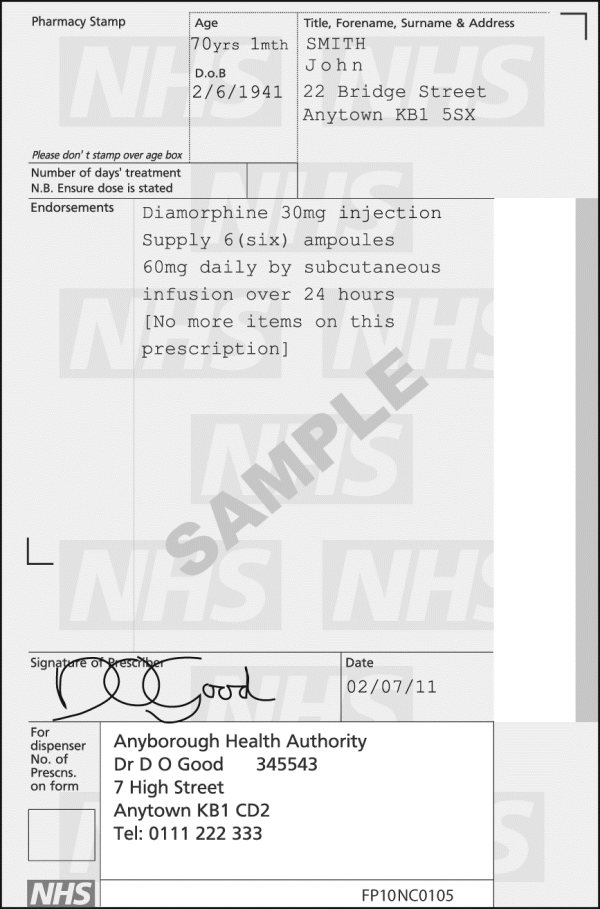- 📖 Geeky Medics OSCE Book
- ⚡ Geeky Medics Bundles
- ✨ 1300+ OSCE Stations
- ✅ OSCE Checklist PDF Booklet
- 🧠 UKMLA AKT Question Bank
- 💊 PSA Question Bank
- 💉 Clinical Skills App
- 🗂️ Flashcard Collections | OSCE, Medicine, Surgery, Anatomy
- 💬 SCA Cases for MRCGP
To be the first to know about our latest videos subscribe to our YouTube channel 🙌
This guide provides an overview of controlled drug prescribing in an OSCE setting with some included examples. There are special prescription requirements for controlled drugs (CD) to restrict their inappropriate distribution and reduce potential harm.
Acts and regulations
The Misuse of Drugs Act 1971 splits controlled drugs into classes A, B and C depending on the harmfulness attributable to the drug when it is misused. This classification forms the basis for legal penalties for unlawful possession and distribution.
The Misuse of Drugs Regulations 2001 sets out regulations surrounding controlled drugs, including who can supply and possess controlled drugs in a professional capacity. These regulations split controlled drugs into schedules:
- Schedule 1 includes drugs like cannabis*, LSD and ecstasy-type substances which are never used for medical purposes.
- Schedule 2 includes opiates and major stimulants such as diamorphine, morphine, pethidine and amphetamine.
- Schedule 3 includes drugs such as barbiturates, buprenorphine, midazolam and temazepam.
- Schedules 4 and 5 exist, but the drugs within are not subject to special prescription requirements.
| Schedule | 2 | 3 | 4 | 5 |
| Special prescription requirements | Yes | Yes | No | No |
* Sativex® (nabiximols) is an oromucosal spray extracted from cannabis sativa, which is used in the treatment of moderate to severe multiple sclerosis spasticity. Its main active components are tetrahydrocannabinol (THC) and cannabidiol (CBD). Sativex® is a schedule 4, part 1 drug; however, it is also listed as class B. This means that people can lawfully possess Sativex® if it was prescribed to them, but to redistribute to people without a prescription is a criminal act (i.e. the distribution of a controlled substance).
Requirements for a controlled drug prescription
Controlled drug prescriptions must:
- Be indelible
- Be dated
- Be signed by the prescriber
- Include the prescriber’s address
- Include the name and address of the patient
- Include the date of birth of the patient (and age if <12 years)
- Include the form of the preparation (e.g. tablets – even if there is only one form of the drug)
- Include the strength of the preparation (if appropriate)
- Include the total quantity in both words and figures (e.g. 20 (TWENTY) tablets, 100 (ONE HUNDRED) millilitres)
- Include the dose to be taken
Controlled drug prescriptions should:
- Include the patient identifier (NHS number in England, Community Health Index number in Scotland, there is no guidance for Wales or Northern Ireland)
- Include the prescriber’s GMC number
- Have a diagonal line drawn underneath the prescription to indicate no more items, OR have “No more items” written under the last prescription.
As the old saying goes, a picture is worth a thousand words, so here is an example of a controlled drug prescription on an FP10 prescription form.
References
- British National Formulary. Controlled drug prescription example. Available from: [LINK].
- Medicines, Ethics and Practice. Edition 40. July 2016
Reviewer
Kitty Chu
Senior Clinical Pharmacist





